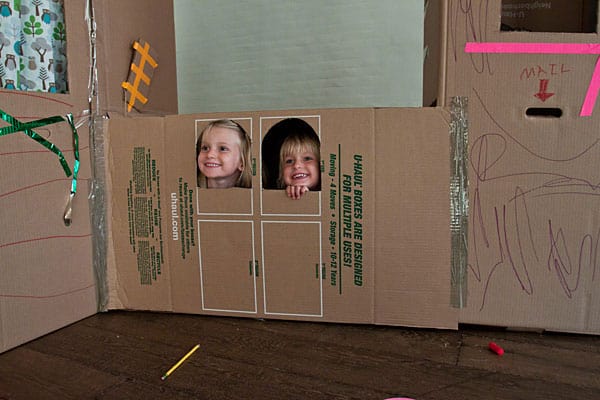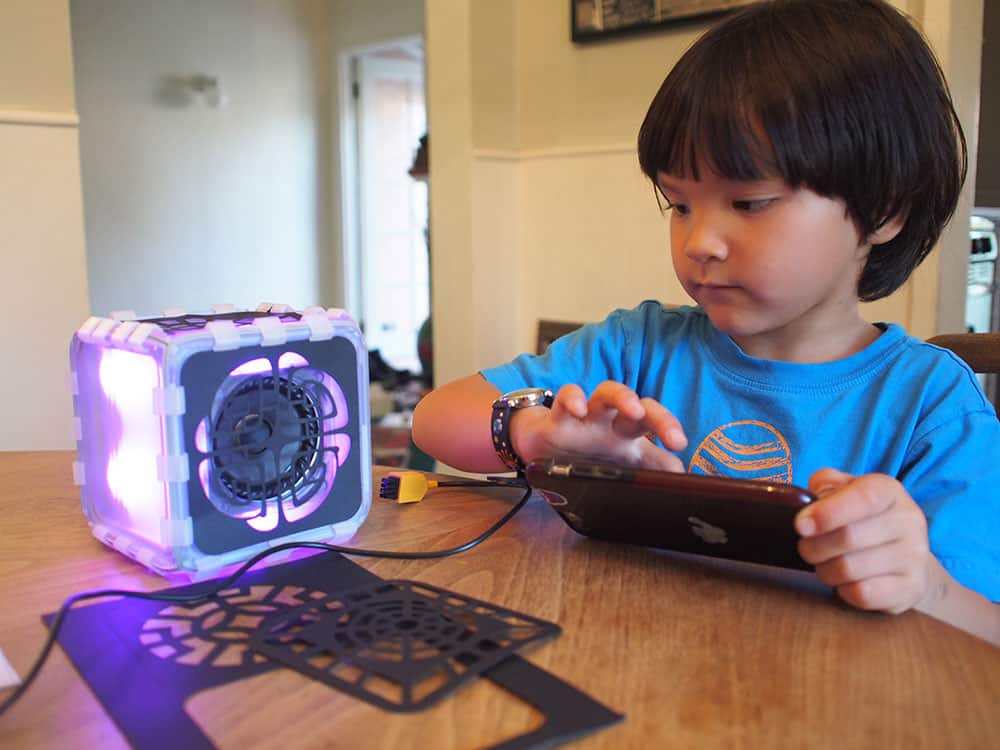Architecture is a fascinating field that encompasses the design and construction of buildings. It plays a significant role in our everyday lives, shaping the environments in which we live, work, and play. By introducing children to the world of architecture, we can inspire their creativity, encourage problem-solving skills, and cultivate a lifelong appreciation for design.
In this article, we will explore the process of designing and building miniature dream homes with kids, providing valuable insights into the world of architecture.

Understanding the Basics of Architecture
Before delving into the intricacies of designing and building miniature dream homes, it is essential to understand the basics of architecture. Architecture is not just about creating aesthetically pleasing structures but also about creating functional spaces that meet the needs of individuals and communities.
The Importance of Architecture in Everyday Life
Architecture surrounds us in our daily lives. From the homes we live in to the schools we attend, architecture influences how we interact with our environment. Teaching kids about architecture helps them understand how thoughtful design can enhance their quality of life and spark their imagination.
Imagine walking into a beautifully designed library, where the natural light streams through large windows, illuminating rows of books neatly arranged on shelves. The architecture of the space not only creates a visually pleasing experience but also provides a calm and inviting atmosphere for reading and learning. Similarly, when we enter a well-designed home, we can appreciate how the layout and flow of the rooms contribute to a sense of comfort and functionality.
Key Architectural Concepts for Kids
Introducing kids to architectural concepts can be an exciting journey. By breaking down complex ideas into bite-sized pieces, we can help them grasp the fundamental principles of architecture. Concepts such as form, function, space, structure, and aesthetics are great starting points for children to develop their architectural vocabulary.
Let’s take a closer look at the concept of form. Form refers to the overall shape and structure of a building. It can be influenced by various factors, such as the purpose of the building, the materials used, and the surrounding environment. For example, a skyscraper in a bustling city might have a sleek and modern form, while a traditional farmhouse in the countryside may have a more rustic and organic form.
Another important concept is function. Function refers to the purpose or use of a building. When designing a space, architects carefully consider how it will be used and what activities will take place within it. For instance, a school building needs to have classrooms, libraries, and recreational areas that cater to the needs of students and teachers. By understanding the concept of function, kids can start thinking about how different spaces can be designed to serve specific purposes.
Introducing Kids to Architectural Design
Architectural design is all about unleashing creativity and exploring new possibilities. By engaging kids in design activities, we can encourage them to think outside the box and come up with innovative solutions to design challenges.
The Role of Creativity in Architecture
Creativity is at the core of architectural design. Encouraging kids to think creatively helps them develop their problem-solving skills and fosters an appreciation for innovative thinking. Designing miniature dream homes provides an excellent opportunity for children to let their imaginations run wild and explore their unique design ideas.
Basic Design Principles for Kids
While creativity plays a vital role, it is essential to introduce kids to basic design principles. Balance, proportion, rhythm, harmony, and unity are concepts that can guide children in creating visually appealing and functional designs. Exploring these principles allows kids to understand how different elements work together to create harmony in a design.
One important aspect of architectural design that kids can learn about is balance. Balance refers to the distribution of visual weight in a design. It is important for kids to understand that a well-balanced design creates a sense of stability and harmony. They can experiment with different ways to achieve balance, such as using symmetrical or asymmetrical arrangements of elements.
Proportion is another key principle that kids can explore. Proportion refers to the size and scale of elements in relation to each other and the overall design. Kids can learn about the importance of proportion by experimenting with different sizes of objects in their designs. They can discover how changing the proportions of elements can create different visual effects and evoke different emotions.
In addition to balance and proportion, rhythm is an important concept in architectural design. Rhythm refers to the repetition or pattern of elements in a design. Kids can learn about rhythm by creating designs with repeated shapes, lines, or colors. They can explore how rhythm can create a sense of movement and visual interest in their designs.
Harmony and unity are also essential principles for kids to understand. Harmony refers to the overall sense of cohesion and compatibility in a design. Kids can learn about harmony by experimenting with colors, textures, and materials that work well together. Unity, on the other hand, refers to the sense of oneness or wholeness in a design. Kids can explore unity by creating designs where all the elements come together to create a cohesive and visually pleasing whole.
Steps to Design a Miniature Dream Home
Designing a miniature dream home involves a series of steps that mirror the process of designing a full-scale building. By breaking down the process into manageable tasks, kids can gain a better understanding of the design process.
Creating a miniature dream home is an exciting project that allows kids to unleash their creativity and imagination. It’s an opportunity for them to design their perfect space, where they can let their dreams come to life. In this expanded version, we will dive deeper into the steps involved in designing a miniature dream home.
Brainstorming and Sketching Ideas
Brainstorming and sketching are integral parts of the design process. Encourage kids to brainstorm ideas by asking them questions about their dream homes. What features would they like to include? How would they arrange the rooms? These discussions can then be translated into sketches, allowing children to visualize their designs.
During the brainstorming phase, kids can let their imaginations run wild. They can dream up unique features like secret passageways, rooftop gardens, or even a mini movie theater. By encouraging them to think outside the box, they can create a truly extraordinary miniature dream home.
Planning the Layout and Structure
Once the initial ideas have been sketched out, it’s time to plan the layout and structure of the miniature dream home. Guide kids through the process of deciding where each room should be located and how they will connect. Emphasize the importance of considering factors such as practicality, flow, and the efficient use of space.
As they plan the layout, kids can think about the functionality of each room. They can consider the placement of windows to maximize natural light, or the positioning of furniture to create cozy nooks for reading or playing. This step allows them to think like architects, carefully considering every detail to create a harmonious and functional space.
Choosing the Right Materials
Materials play a crucial role in the construction of any building, regardless of its size. Help kids explore different materials and their properties. Discuss the advantages and disadvantages of each material, encouraging them to make informed decisions based on their design goals.
During this step, kids can learn about the characteristics of various materials, such as wood, plastic, or cardboard. They can consider factors like durability, flexibility, and aesthetics. By understanding the properties of different materials, they can make choices that align with their vision for the miniature dream home.
Designing a miniature dream home is not just a fun activity; it’s an opportunity for kids to develop important skills such as critical thinking, problem-solving, and creativity. By following these steps and adding their personal touch, they can create a miniature dream home that reflects their unique style and imagination.
Building the Miniature Dream Home
With the design finalized, it’s time to turn the dream home into a reality. Building a miniature dream home provides hands-on experience and allows kids to understand the practical aspects of turning a vision into a tangible structure.
Translating Design into Reality
Translating the design into a physical structure involves attention to detail and careful craftsmanship. Guide kids through the process of measuring, cutting, and assembling materials to create their dream homes. Provide supervision and demonstrate safe construction techniques to ensure a positive and rewarding experience.
Overcoming Construction Challenges
Building miniature dream homes may present challenges that require problem-solving skills. Encourage kids to identify and overcome these challenges through critical thinking and creative solutions. These experiences will help them develop resilience and adaptability, valuable skills that can be applied in various aspects of their lives.
Learning from the Process
Designing and building miniature dream homes is not just about the final product; it’s about the journey and the skills acquired along the way. By reflecting on the process, kids can gain valuable insights that extend beyond architecture.
Enhancing Problem-Solving Skills through Architecture
Architecture offers an excellent opportunity to enhance problem-solving skills. The design process requires critical thinking, problem identification, and finding practical solutions. By engaging kids in architectural projects, we can nurture their ability to tackle challenges in a creative and logical manner.
Fostering a Love for Architecture in Kids
Engaging kids in designing and building miniature dream homes can ignite a passion for architecture that may stay with them throughout their lives. By fostering curiosity, encouraging exploration, and providing a supportive learning environment, we can inspire the next generation of architects and designers.
In conclusion, exploring architecture with kids and guiding them through the process of designing and building miniature dream homes is an exciting and enriching experience. Not only does it provide valuable insights into the world of architecture, but it also cultivates creativity, problem-solving skills, and a lifelong appreciation for design. By nurturing their love for architecture at a young age, we lay the foundation for a future generation of innovative thinkers who can shape the world around them.



